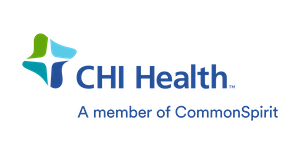Amputation Rehabilitation
Expert Care for Amputation Rehabilitation
Loss of a limb produces a permanent disability that can impact a patient's self-image, self-care, and mobility (movement). Rehabilitation of the patient with an amputation begins after surgery during the acute treatment phase. As the patient's condition improves, a more extensive rehabilitation program is often begun.
The success of rehabilitation depends on many variables, including the following:
- Level and type of amputation
- Type and degree of any resulting impairments and disabilities
- Overall health of the patient
- Support from family and friends
It is important to focus on maximizing the patient's capabilities at home and in the community. Positive reinforcement helps recovery by improving self-esteem and promoting independence. The rehabilitation program is designed to meet the needs of the individual patient. Active involvement of the patient and family is vital to the success of the program.
The goal of rehabilitation after an amputation is to help the patient return to the highest level of function and independence possible, while improving the overall quality of life — physically, emotionally, and socially.
In order to help reach these goals, amputation rehabilitation programs may include the following:
- Treatments to help improve wound healing and stump care
- Activities to help improve motor skills, restore activities of daily living (ADLs), and help the patient reach maximum independence
- Exercises that promote muscle strength, endurance, and control
- Fitting and use of artificial limbs (prostheses)
- Pain management for both postoperative and phantom pain (a sensation of pain that occurs below the level of the amputation)
- Emotional support to help during the grieving period and with readjustment to a new body image
- Use of assistive devices
- Nutritional counseling to promote healing and health
- Vocational counseling
- Adapting the home environment for ease of function, safety, accessibility, and mobility
- Patient and family education
Types of Rehabilitation Programs for Amputations
There are a variety of treatment programs, including the following:
- Acute rehabilitation programs
- Outpatient rehabilitation programs
- Day-treatment programs
- Vocational rehabilitation programs
We're Here for You
Losing a limb or recovering from a major trauma involves rediscovering your independence and recovering your confidence. Don't let it hold you back. We’re here to make sure you gain the knowledge, physical strength and emotional support you need to do just that. Our full continuum of care is built to meet your every need. We coordinate services such as orthotic and prosthetic fittings, and utilize our barrier-free Kinesis System that helps improve balance, flexibility, muscular strength and endurance.
All patients have access to our team of experts, comprehensive education and a peer visitor program to help you connect with others who know first-hand what you’re going through.
After Discharge
It helps to talk with peers who have also undergone amputation surgery. It is good to hear how others deal with the situation, and in many cases they’ll also be able to share tips on everything from using your prosthesis to finding community resources. CHI Health has an amputee support group for this purpose.
CHI Health's Sports and Leisure Program is available to help you use assistive devices to get back to the activities you love or discover new ones.
